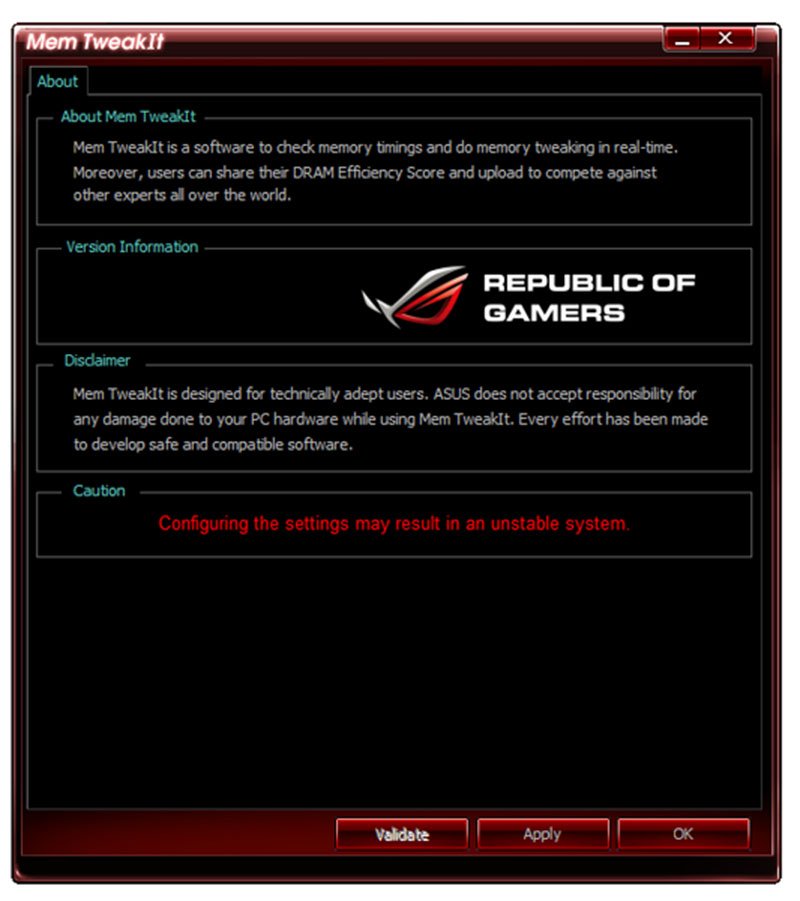ASUS Maximus IX Hero LGA1151 Motherboard Review
John Williamson / 8 years ago
Software Overview
ASUS’ AI Suite 3 software package houses an impressive range of utilities within a single, compact window. The Dual Intelligent Processors 5 combines TPU, EPU, DIGI+ VRM, Fan Xpert 4 and Turbo App functionality to optimise your system’s hardware. The 5-Way Optimisation automatically configures your PC based on real-time usage and allows you to prioritise pure performance and enjoy a faster CPU frequency within a single click or employ a lower power draw. Not only that, the software can create tailored settings for different applications. The Extreme Tuning engine allows you to manually set the target CPU voltage, frequency and temperature. Interestingly, the calibration process utilises a memory stress test and AVX instruction to check for stability.
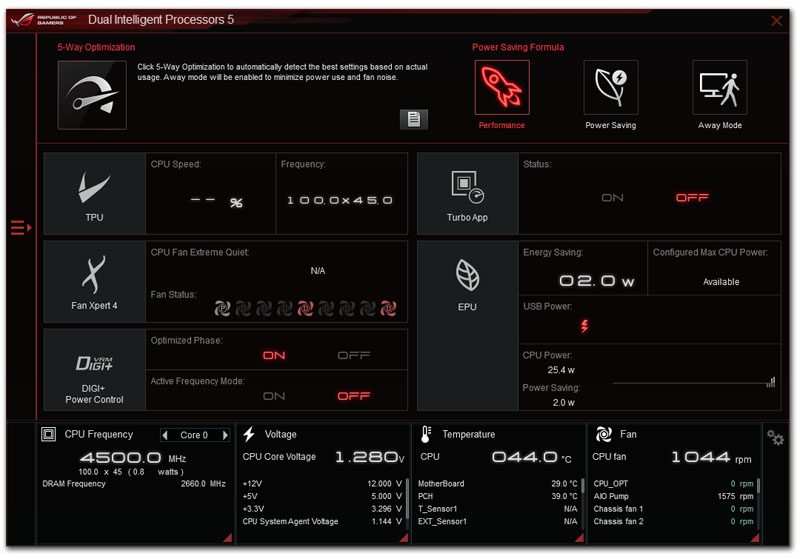
Directly in the software, you can adjust the BCLK frequency, CPU Core Ratio, Cache Ratio and voltage. Notice how the end-user is able to rely on adaptive voltage or create their own fixed rate. The menu’s clear diagrams make the overclocking procedure an enjoyable experience and less daunting to newcomers. Also, the various readings help to gauge system stability to detect if something is amiss.
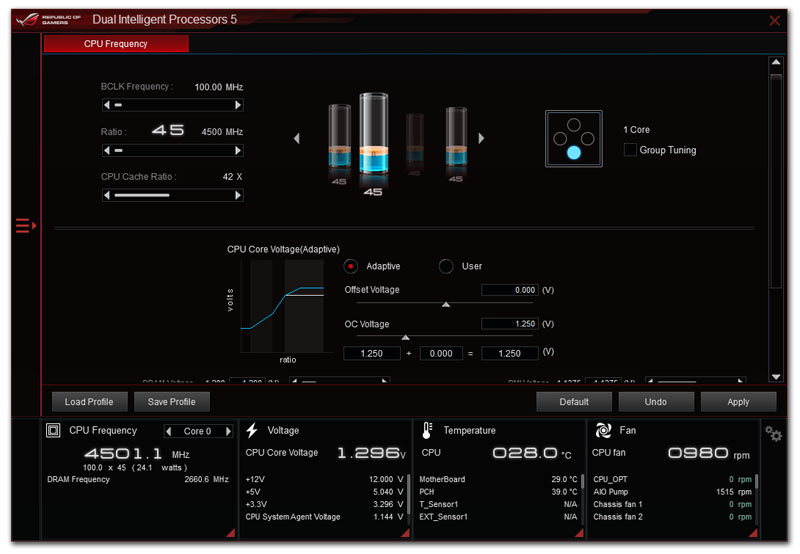
The Turbo App list is another useful tool to set specific CPU overclocking rules and fan speeds for different applications. Essentially, you can use a higher frequency for demanding programs and dial the fans back down when it seems suitable.
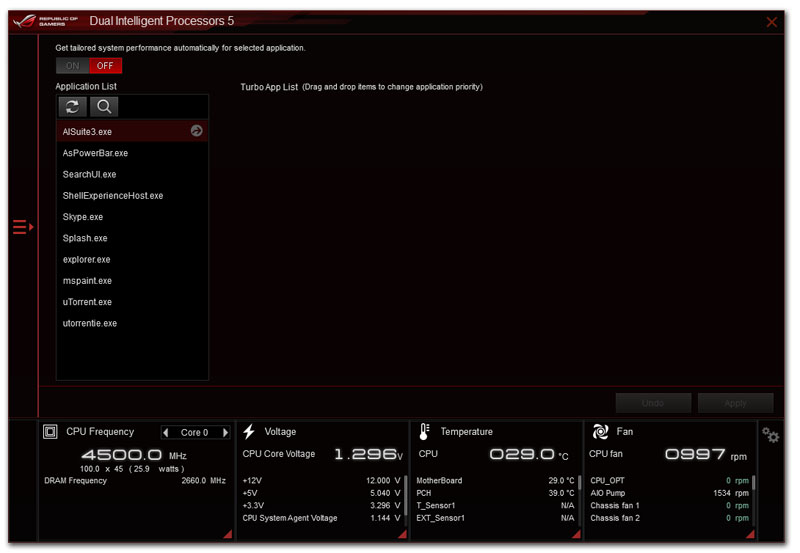
The software’s power control is a handy extra to customise the time period when the monitor or system switches off due to inactivity.
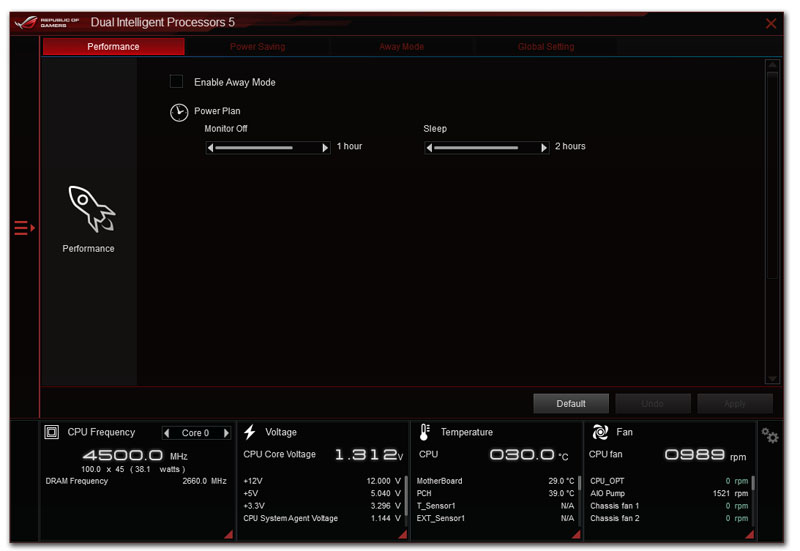
As you might expect, the software contains a fan tuning utility which can automatically create a fan curve based on your cooling hardware and thermal values. Not only that, it’s possible to select from four default profiles which match your personal preference.
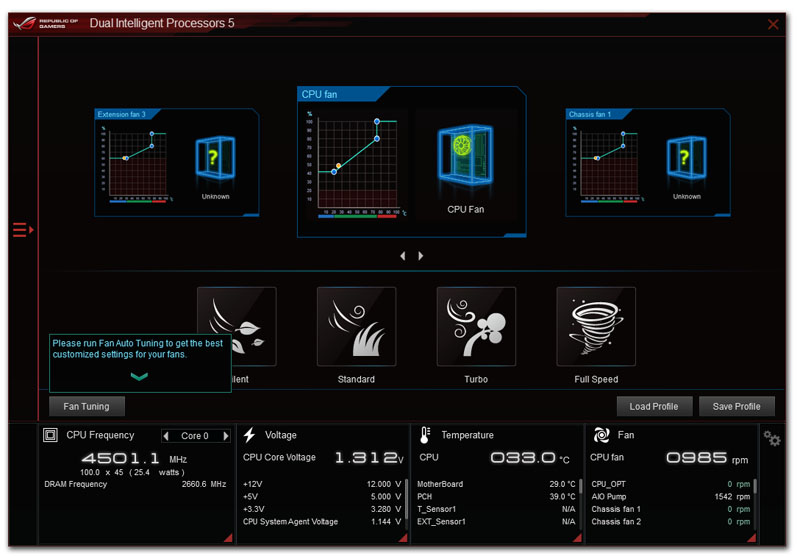
Here we can see the manual mode which revolves around a percentage curve and temperature threshold from 0-100C.
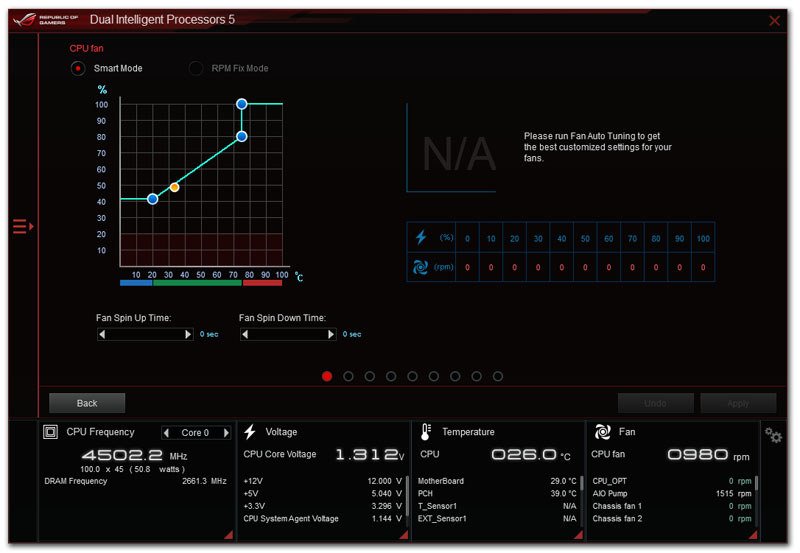
Once calibrated, the software has a report detailing its findings and illustrates the fan curve on a graph.
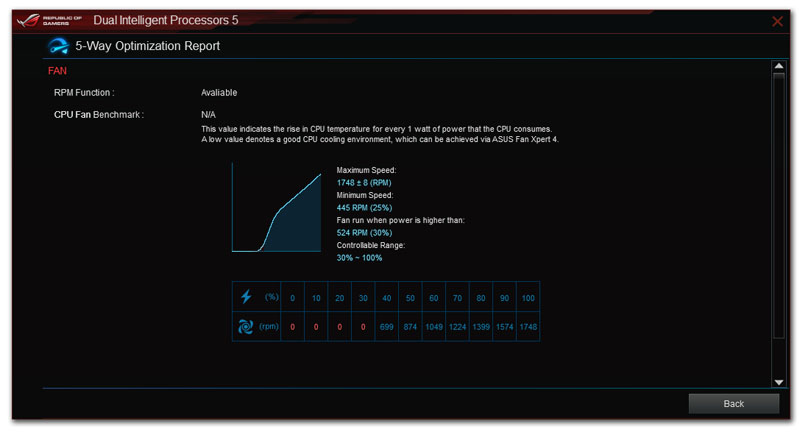
Interestingly, it’s possible to modify the CPU Power Phase Control, VRM Switching Frequency, Load-Line Calibration and more in a quick manner.
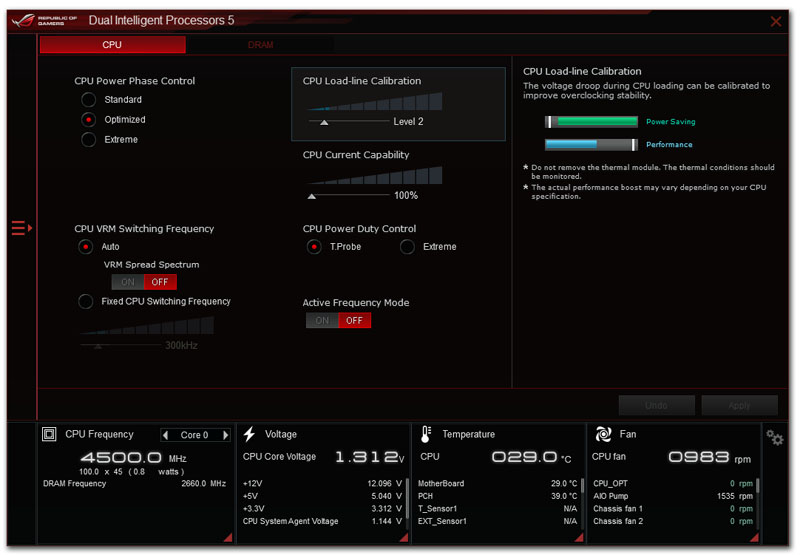
The software has a dedicated application to clean up a Windows install and remove any junk files such as temporary directories, pre-read files and system logs. Unfortunately, it doesn’t seem to analyse the registry and delete duplicate entries.
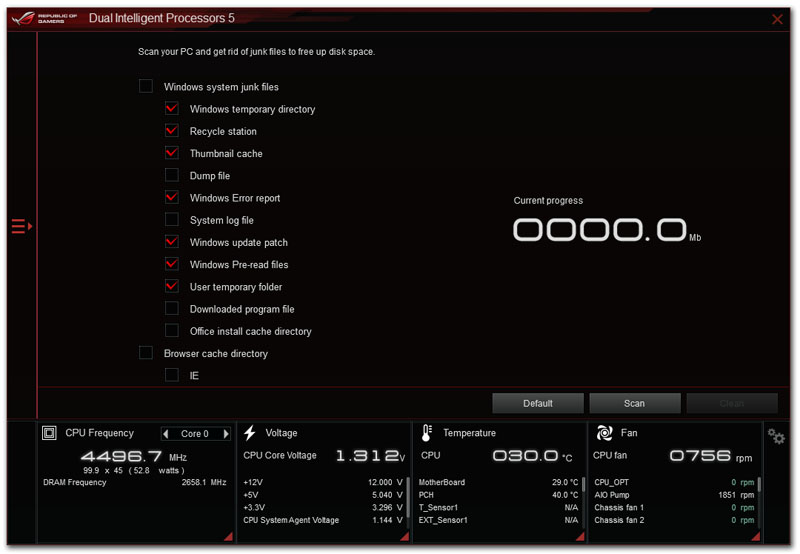
Updating ASUS’ software suite and the motherboard’s BIOS is really simple and much more convenient than manually searching for each individual update.
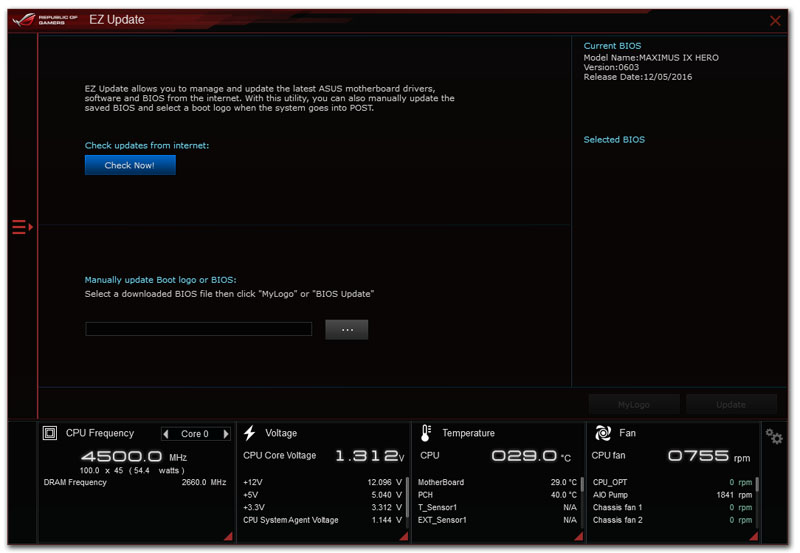
The System Information tab lists the motherboard model, BIOS version and even the serial number.
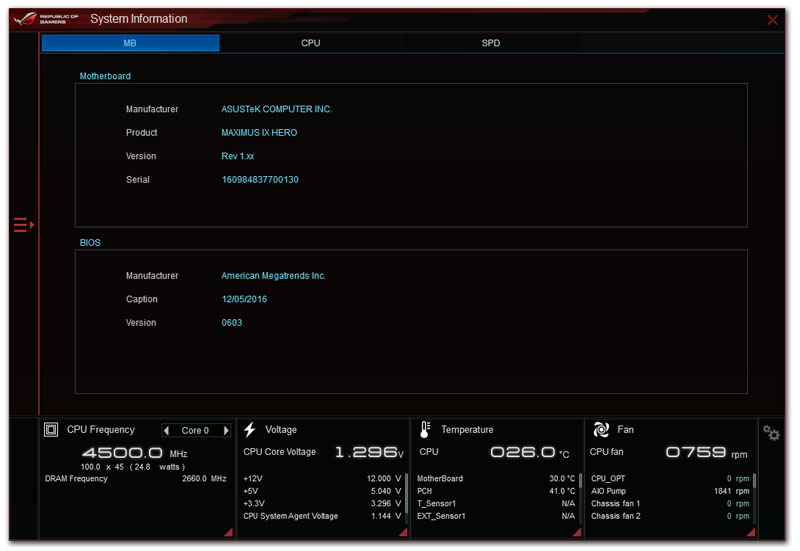
Next up is the Aura lighting application containing an impressive range of transitional effects and colour options. Not only that, it’s possible to change the sequence, speed and choose from a staggering 16.7 million colours. The software isn’t just limited to the motherboard and allows you to modify the visual style of other ASUS devices like the ROG Claymore and Spatha.
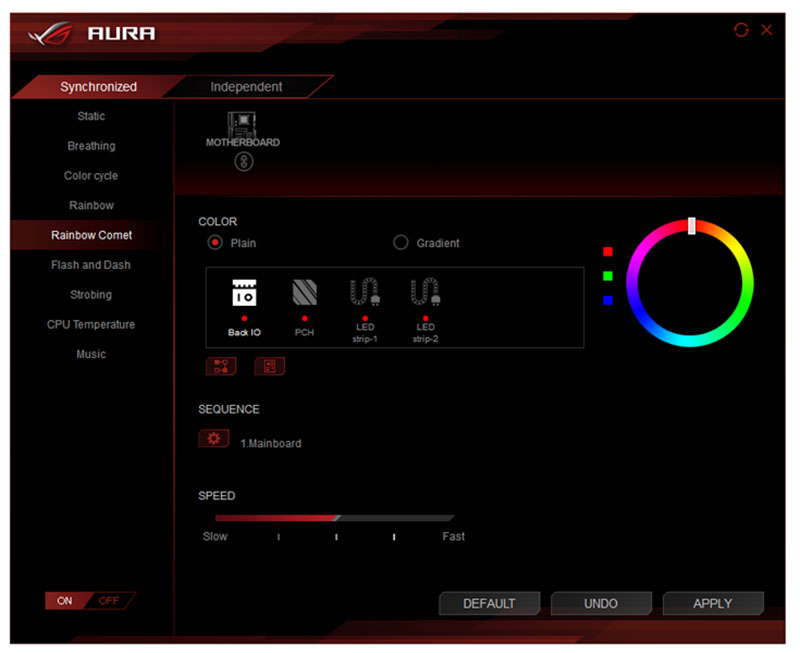
The Clone Drive utility creates an identical copy of a hard drive and backs up all your sensitive data. Unbelievably, the process only requires up to 5 percent CPU utilisation and can be run in the background without impacting on performance. The Clone Drive has the ability to copy two drives simultaneously which become functional once the process is complete.
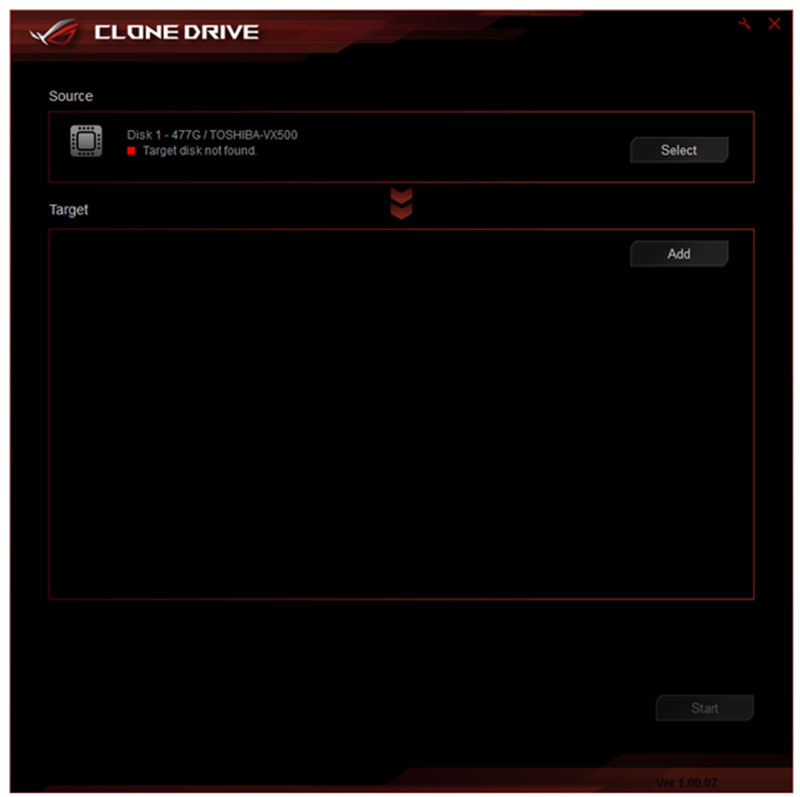
The GameFirst IV application prioritises network traffic to reduce lag during competitive games. ASUS’ latest version has Multi-Gate Teaming which combines multiple gateway networks to provide the maximum bandwidth. On another note, the Intelligent Mode analyses the most frequently used software and optimises the bandwidth accordingly. Furthermore, the utility identifies apps and can set P2P software to a lower affinity while a game is being played.
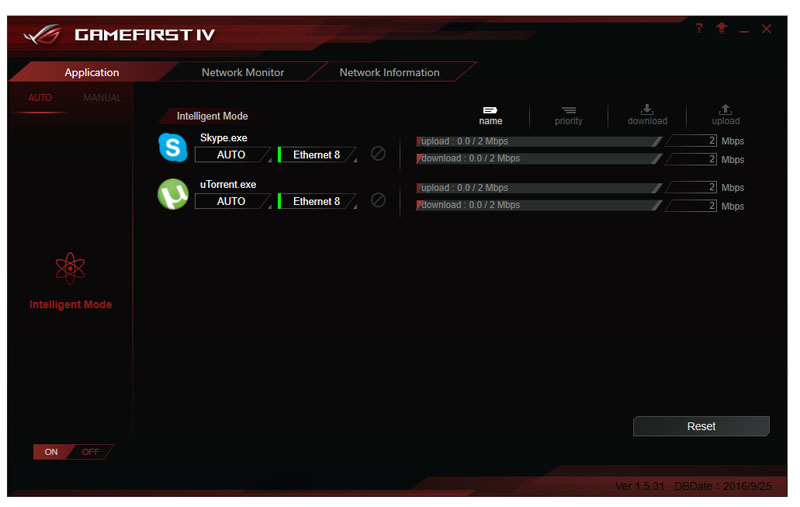
Here we can see the RAMCache II tool which can be used to allocate a cache of RAM between the hard disk and applications. The end result is an extremely fast drive which even eclipses the most expensive NVMe storage devices available today. Unlike some RAMDisk solutions, ASUS’ creation isn’t limited to a specific program, providing it’s the dedicated storage device.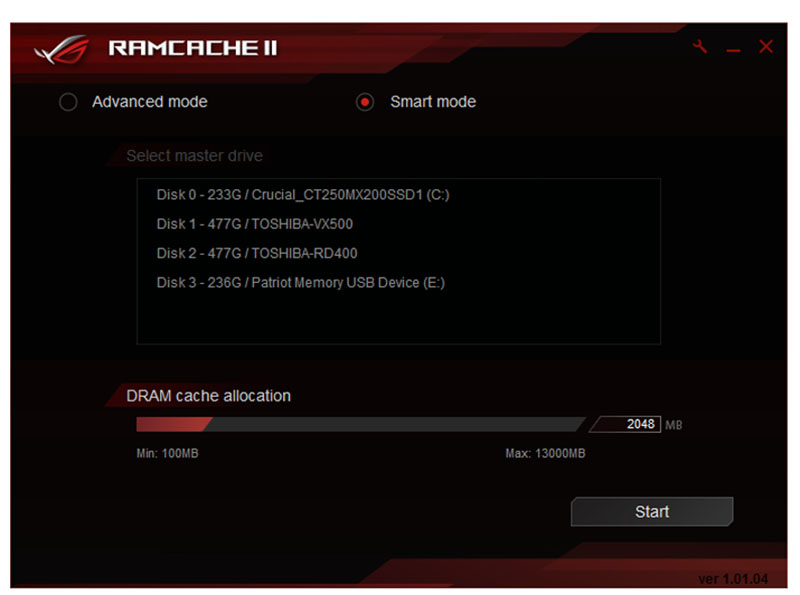
The Sonic Studio III allows you to add various effects such as Reverb and change the audio characteristics based on four pre-configured profiles. Also, you can map audio streams to different outputs. For example, it’s possible to direct a web browser’s audio through a connected TV and use the headphone port for gaming scenarios.
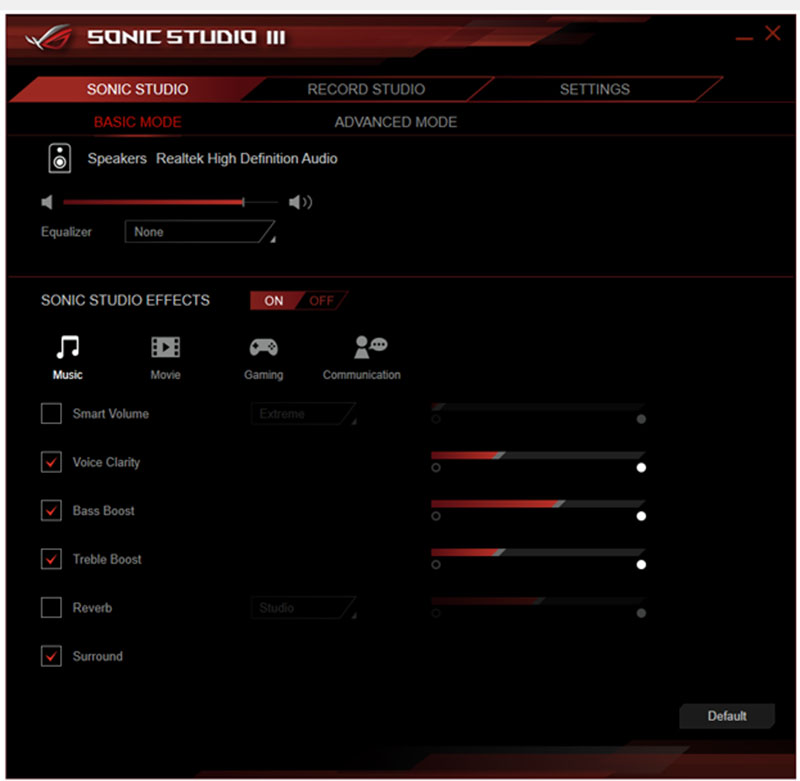
Sonic Radar III has been completely overhauled and displays the direction of incoming sounds. The audio movement is charted on a radar overlay to give you an advantage over the competition. Interestingly, the latest version has a simplified radar design which isn’t as distracting. In total, the radar contains 24 segments which allow for extremely high accuracy when determining the movement of sound. The 3D arrow adds direct feedback while being unobtrusive. Also, the audio boost allows users to listen to active Sonic Radar Filters which target specific sound sources.
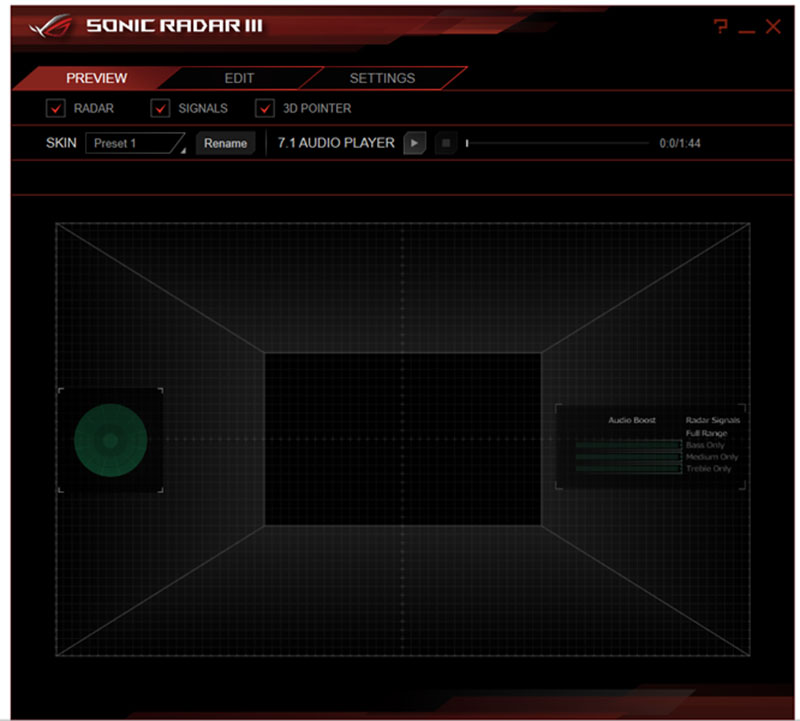
ASUS’ Keybot II allows you to assign macros to individual keys and perform essential commands. This could save you a lot of time and increase productivity.
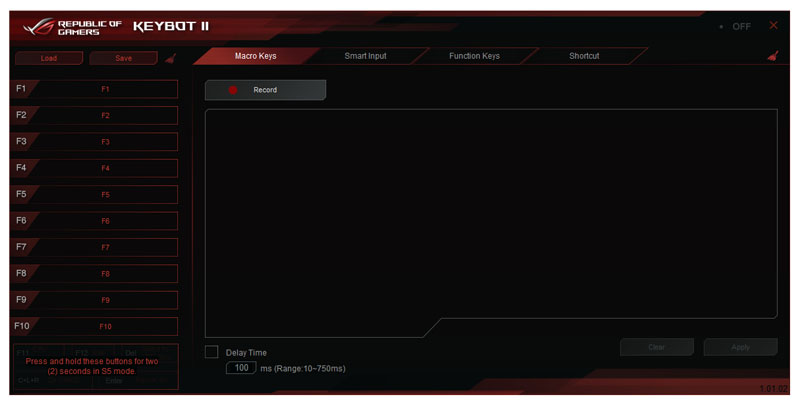
The Mem TweakIt utility constantly analyses the memory timings in real-time and makes adjustments to enhance system performance.
